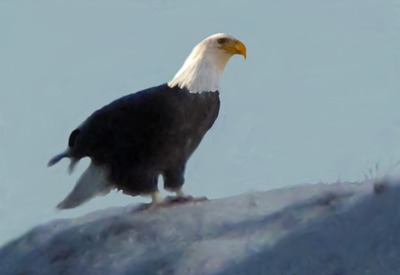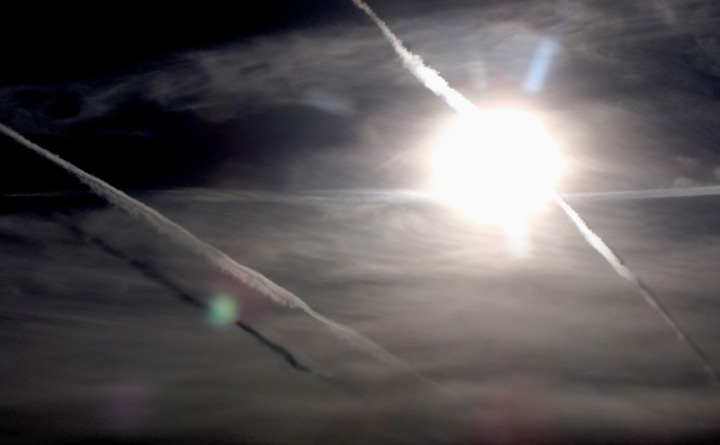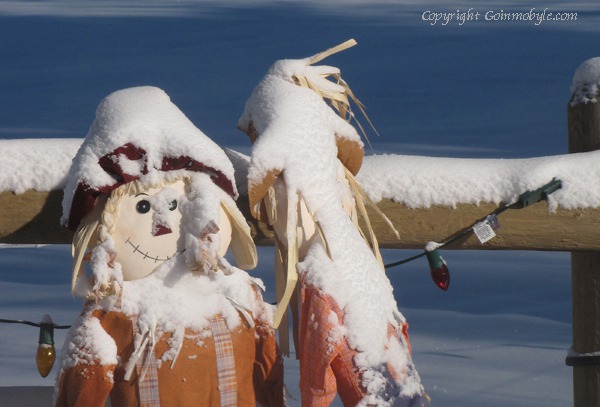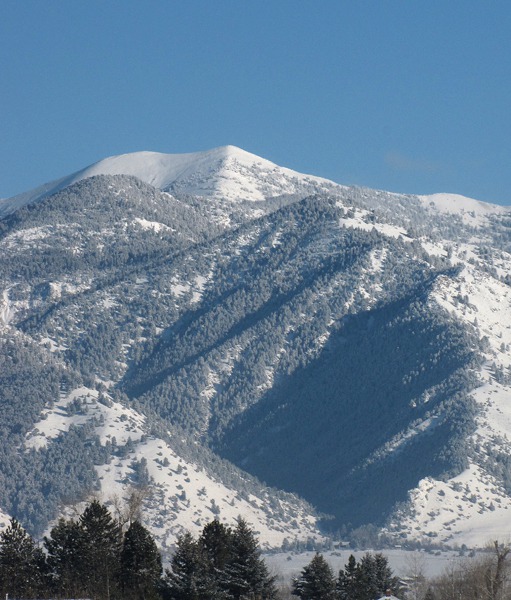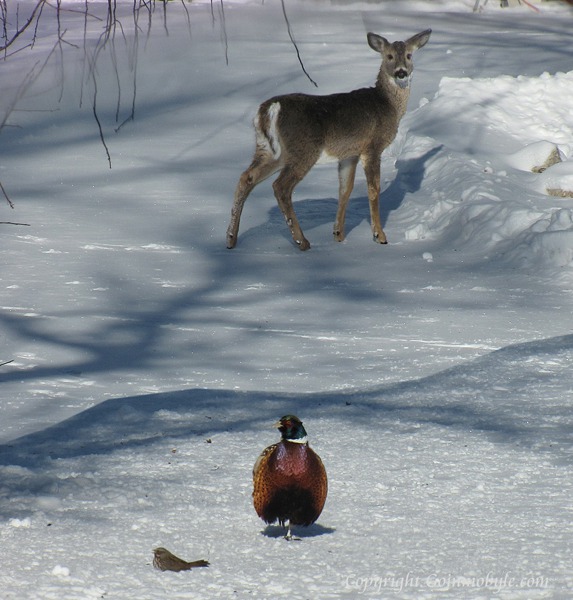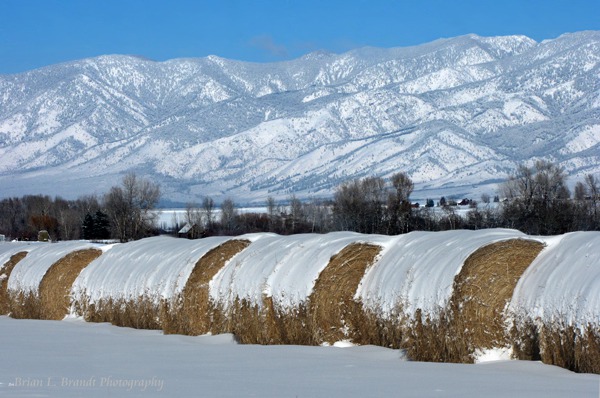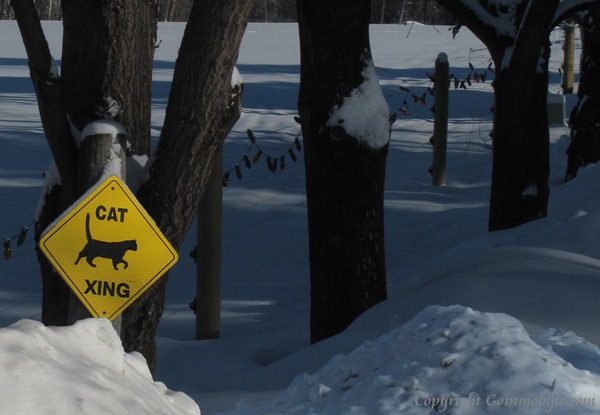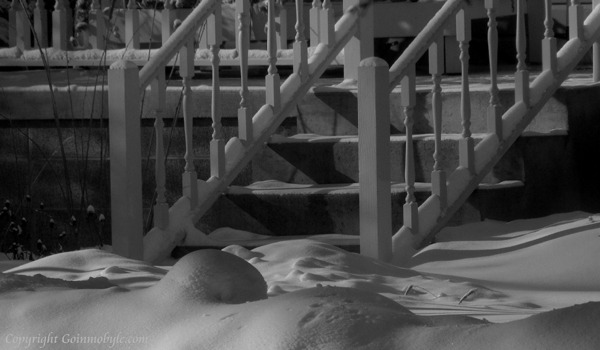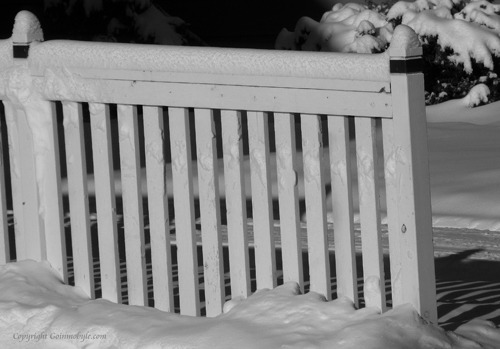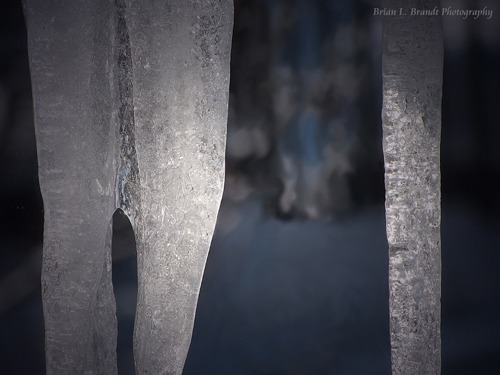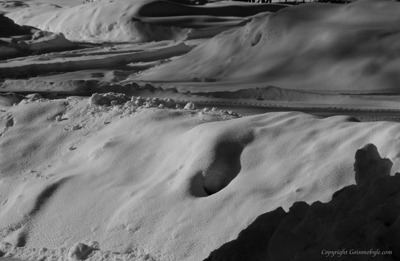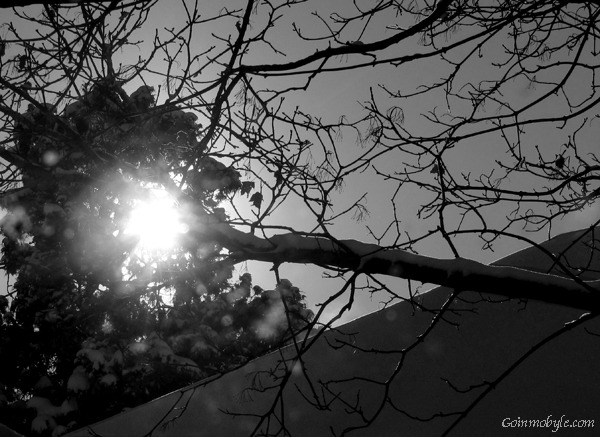We got into Bozeman waaay late in the pitch dark, of course. We were very happy to have driven the last 350 miles on reasonably cooperative I-90. No semi-trucks tipped on their sides going through Livingston, as used to frequently be the case in winter before DOT put in the mandatory "wind detour" past the mouth of the Yellowstone River Canyon. The canyon acts as a venturi to accelerate the wind into a truck-tipping froth through Livingston. Very few good-hair days in that neo-artsy little town.
Hunkered in Bozeman: In typical fashion, Bozeman's weather was cold and foul most of the ten days we were there. We've lived elsewhere most of our adult lives, and we often ponder why anyone would find Bozeman so chic these days. Mostly, as we remember it, the weather is just cold and gray for a lot of the winter. The streets are packed narrow with snow and ice that doesn't melt until spring, causing people to pull into parking spots to let other cars pass by on a lot of the claustrophobia-inducing town streets.
We did get out for one or two short jaunts around Bozeman during the couple very brief "sun episodes" of the trip. We think it's these little sun spells that people remember about Bozeman winters -- like how the memory of the one glorious day at the zoo with balloons, monkeys, and cotton candy stands out clear and shining from an otherwise unhappy childhood.
The brief sun woke up the Gallatin Valley after days and days of gray and gloom.Back in town, we walked around the neighborhood looking for interesting shapes and light in the snow in an attempt to stave off the "stir crazies" from the cold and gray that shrouded Bozeman for days at a stretch. We finished off that day on the same block, waiting for the crock pot to do its magic. Leesha wouldn't have liked being cooped up in the house in this weather. She loved to explore Allen's back yard, but she didn't like snow on her paws.


